5 Biggest Oil Platforms in the World
Oil and gas platforms or offshore drilling rigs are constructed for extracting, storing and processing petroleum and natural gas lying beneath the ocean floor. These platforms are of different types, such as fixed, spar type, semi-submersible, etc.
The largest number of oil rigs are located in the Gulf Of Mexico and owned by the US government, followed by the Persian Gulf and the Far East.
With advancements in the energy sector and maritime engineering, such structures have been built to withstand the toughest conditions while reducing their environmental impact. Endowed with the latest technologies to maximise productivity, these are pivotal for meeting the global oil demands.
Most platforms are equipped with basic amenities as workers live on these structures to oversee the operations. Accidents in these facilities can be disastrous for marine and human life; hence, they have world-class security systems for detecting any potential leakages.
Described below are the five biggest oil platforms in the world.
Berkut oil rig
Berkut is the biggest oil and gas platform in the world, situated near the Russian coastline facing the Pacific Ocean, near the island of Sakhalin, close to the Japanese mainland. It is truly an engineering marvel, weighing about 200,000 tonnes and 35 m deep from the seafloor. It is estimated that the platform’s maximum oil extraction capacity is 4.5 million tonnes annually.
Constructed to tap the expansive Arkutun-Dagi oil reserves spanning more than 50 kilometres from the coast of Russia into the Okhotsk Sea, this platform was one of the most expensive and challenging projects undertaken by a consortium of major oil companies from the US, Japan, India and Russia who spent 12 billion dollars on Berkut or Golden Eagle. The name of this platform underlines its economic significance for Russia, and the government has estimated the revenue earnings from the rig to be more than 9 billion dollars in the next ten years.
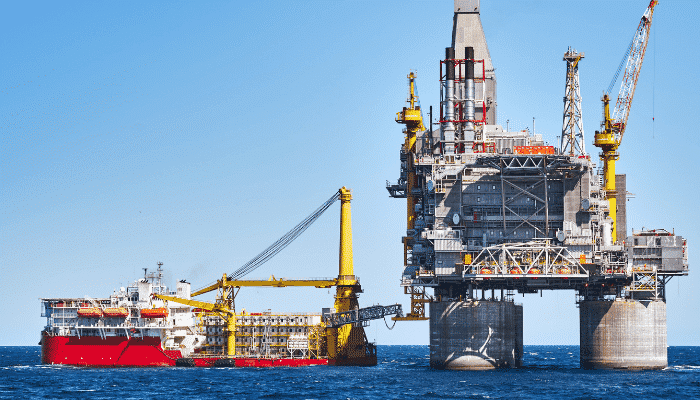
Before the platform was built, 27 wells were dug to extract oil, which would be transported to the Chaivo oil refining plant.
Lastly, it would be sent to the oil terminal at the Dekastri port through a pipeline for export worldwide. The main structure, the platform, rests on four strong pillars rising above the sea. It was designed by Russian Engineers and built in the port of Vostochny in the eastern Russian region, utilising 53,000 m3 and 26,000 tonnes of concrete and steel. One of the levels was built in Daewoo Shipbuilding and Marine Engineering yard in South Korea by 4500 men and brought 2600 km offshore to the oil field using gigantic lifting equipment.
Located in a harsh zone with floating arctic icebergs, the platform has been designed to operate even in extremely low temperatures and comprises a unique electricity system to keep functioning during the freezing Russian winters. It can resist ice caps as thick as 2 m due to its novel concrete lining, which would also protect the platform from huge waves as high as 19 m and can also withstand the highest magnitude earthquakes.
The platform measures 105 m lengthwise 61 m breadthwise, while its height is 145 m. It weighs 42,000 tonnes and has many levels installed with modules, emergency equipment, a security system, a rig, a processing unit, a living area, a helipad, and other facilities. It runs on four gas turbines and three generators to offer optimum efficiency.
Perdido
The Perdido oil and gas platform is the second biggest in the world located near the US Gulf of Mexico. It became operational in 2010 and is operated by one of the biggest oil companies, Shell Oil. The project was quite challenging in terms of geographical restraints since the gulf is ridden with typhoons and hurricanes.
Hence the platform had to be durable to withstand hurricanes and extremely low temperatures. The water depth of the structure from the seabed is around 8000 feet and extracts oil and gas from the Great White, Tobago and Silverfield; three low-pressure oil reserves of the region. The platform extracts 100,000 barrels of oil and 200 million m3 of gas every day.
Featuring a unique classic spar design, it was constructed in Finland by the construction company Technip. The spar measures 170 m and its hull was as tall as the Eiffel tower and as heavy as 11000 vehicles. Around 12,500 experts were involved in the designing, construction and assemblage of one of the world’s deepest oil production facilities, whose platform weighs 53,000 tonnes and whose decks are as expansive as 2 soccer grounds.
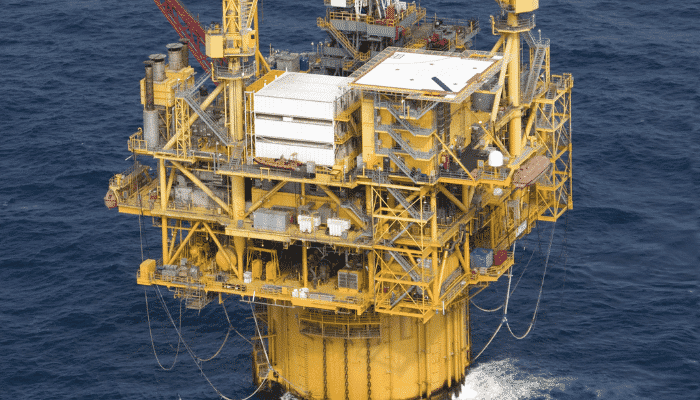
Numerous barges and carriers transported the spar and platform from Finland to the Gulf of Mexico. Mooring it correctly was a cumbersome task that took more than 22 hours, with the team operating despite a fast-approaching hurricane Gustav. The structure withstood the strong hurricane due to its internal ballast system, which floods the tanks and keeps the platform stable while reducing movement with the high waves and strong winds and minimising the pressure on the pipes carrying oil and gas to the platform from the seafloor.
The platform comprises three levels comprising a processing plant, living spaces for about 175 workers and a drilling rig. It also has a water purification and desalination system, a restaurant, gyms, TV rooms, emergency equipment and an internet connection.
It has a highly advanced security system and rescue boats capable of accommodating 25 workers in case of an accident. The platform has a helipad that is big enough to land 2 helicopters capable of carrying 23 workers each in case of a hurricane.
Petronius
The Petronius oil platform is situated in the Gulf of Mexico, close to New Orleans in the US. The construction of this fixed, compliant tower-type rig began in 1997 and ended in 2000. Lying at an underwater depth of more than 530 m, it was envisaged to exploit the Petronius oil field found in the 1990s and named after the famous Roman author serving in the court of Roman Emperor Nero.
The rig was once the highest independent structure before being overtaken by the Burj Khalifa in Dubai. Its construction was especially ridden with many technical problems since it was undertaken in the 90s and cost around 500 million dollars. It was constructed by Mc Dermott International Limited, which was also responsible for its assemblage, while the engineering contract was given to WH Linder and Associates.
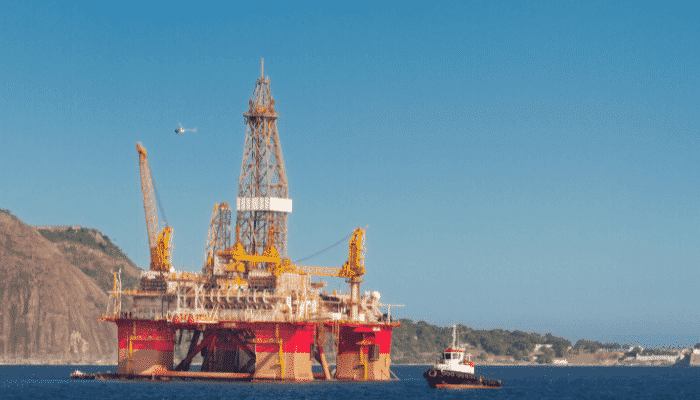
Before its construction, 16 oil wells were drilled and connected with oil pipelines. Usually, the platforms are made to be stable to resist movement due to waves or winds, but this structure sways with the tidal currents however it has a strong foundation achieved due to numerous pilings extending from the upper structure to the seabed. It is 1869 feet high and weighs 41,000 tonnes.
It has two levels weighing 8000 tonnes, comprising essential equipment and living rooms for workers, pipelines, operations room and a drilling rig along with 21 slots for oil wells. The facility extracts more than 60,000 barrels and 3,100,000 m3 of oil and natural gas every day.
One of its modules weighing around 4000 tonnes was fixed in 1998 however the comparatively lighter module weighing 3500 tonnes could not be installed as the lifting wires broke, damaging the installation equipment. It was rebuilt and put in place by an 8000-ton capacity crane.
Hibernia platform
The Hibernia oil rig is roughly 314 kilometres from St John, Newfoundland, in Canada. It was constructed to exploit the oil reserves in Hibernia and the Avalon, one of the oldest in the world. Lying at depths of more than 3500 m underwater, these fields are thought to contain over 3 billion barrels of petroleum. They were found in 1979, and the construction of the Hibernia oil platform began in 1991 and was completed in seven years. It produces over 1400 barrels of oil every day. Operated by ExxonMobil, it is owned by numerous companies jointly, such as Murphy Oil and Chevron.
Since the region has inhospitable weather conditions with strong northern winds, fog, and huge floating icebergs, a GBS was considered an ideal choice for giving the structure the desired stability and durability to endure these conditions while working at its maximum capacity. Additional wells were drilled in 2008 to increase production.
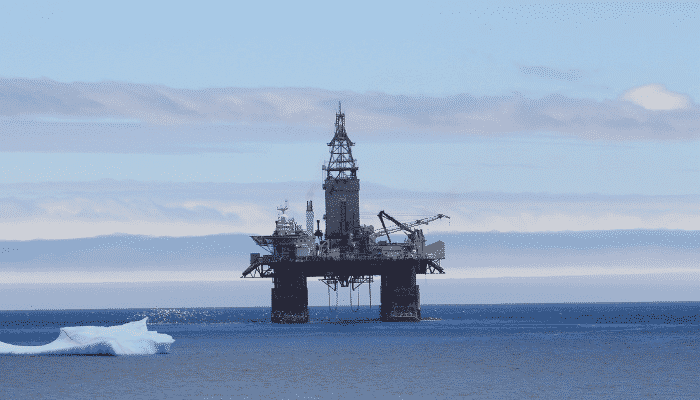
The structure comprises a 106 m cement caisson made of concrete, protected by a surrounding steel structure to resist icebergs. The GBS comprises facilities for storing 1.4 million barrels of oil. The oil from these tanks is transported using an oil tanker serving this facility.
The 38,000-tonne decks are supported by four shafts with a height of 100 m. One of the levels contains the automated control and emergency alarm system, while the lowest has temperature control and pipelines.
These decks also comprise rooms capable of accommodating 190 workers, modules, life-saving equipment, rescue vessels and a helipad. The different components of the rig were built in the world’s best manufacturing facilities, with the modules being brought from Italy and the Daewoo shipbuilding yard from Korea.
The components were transported through barges to the installation site and placed over the GBS platform. The world’s fourth-biggest oil platform, weighing 600,000 tonnes, was then completed.
Olympus oil platform
The fifth-biggest oil and gas platform, Olympus, was constructed to exploit the Mars fields in the Gulf of Mexico, 200 kilometres south of New Orleans, US. The installation of this platform was part of a project aimed to expand the life of the oilfields till 2050 and further if possible.
Starting in 2010, it was completed in three years, involving more than 24,000 workers in the construction and assembling phase. The platform’s base was built by Samsung Industries in the South Korean Daewoo Shipbuilding yard and brought to the installation site using barges. Oil was first extracted from the rig in 2014.
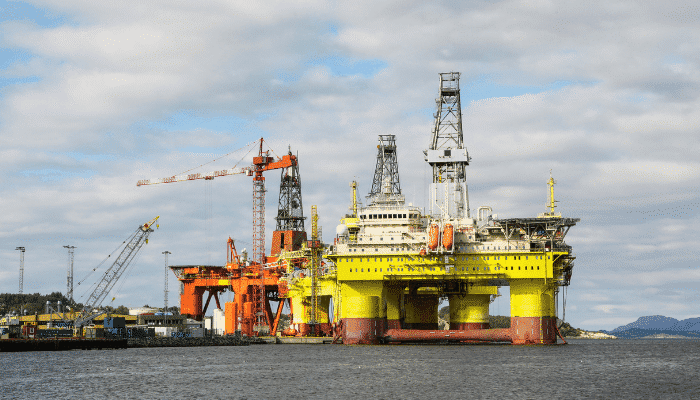
It is a tension-leg type platform moored just a kilometre from the old platform and is the largest in the Gulf of Mexico region and the 7th biggest facility owned by the Shell Company. The platform extracts and processes more than 360,000 barrels of oil daily through the 48 oil wells that draw out oil from underwater depths of 6500 m.
The Mars field was founded in 1989, and production was started in 1997. It is crucial for meeting US energy demands and is an important natural resource for the nation. Standing at 405 feet and weighing 122,000 tonnes, Olympus combines the latest technologies and modern amenities for its 195 workers.
The living area is spread over four floors and includes pantries, gymnasiums, a small first-aid room with medical personnel and emergency evacuation equipment. The platform’s supporting pillars are coated with special corrosion-resistant paint.
You might also like to read:
- Life On An Oil Rig: Do You Know What It Takes?
- What are Jack Up Drilling Rigs?
- Different Types Of Offshore Oil and Gas Production Structures
- Types Of Mobile Offshore Drilling Units (MODU)
- What is an Offshore Barge?
Disclaimer: The authors’ views expressed in this article do not necessarily reflect the views of Marine Insight. Data and charts, if used, in the article have been sourced from available information and have not been authenticated by any statutory authority. The author and Marine Insight do not claim it to be accurate nor accept any responsibility for the same. The views constitute only the opinions and do not constitute any guidelines or recommendations on any course of action to be followed by the reader.
Do you have info to share with us ? Suggest a correction
Subscribe To Our Newsletters
By subscribing, you agree to our Privacy Policy and may receive occasional deal communications; you can unsubscribe anytime.



